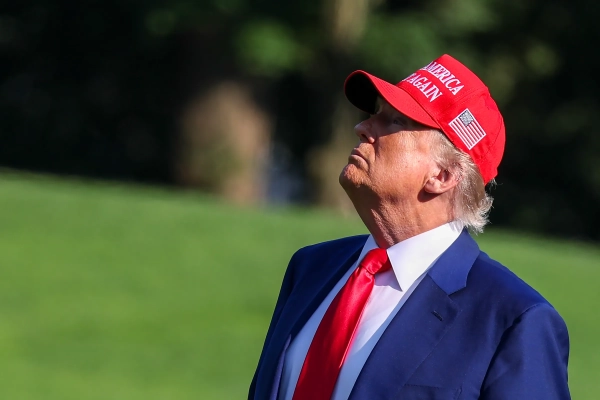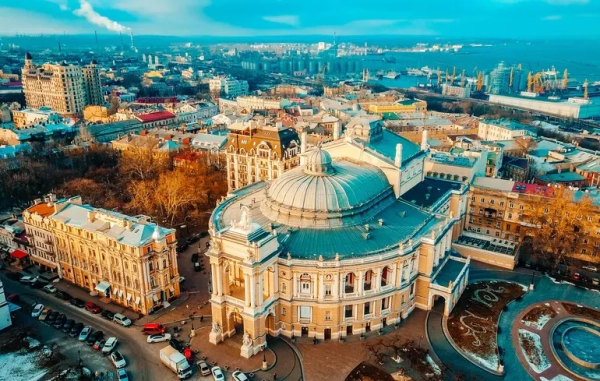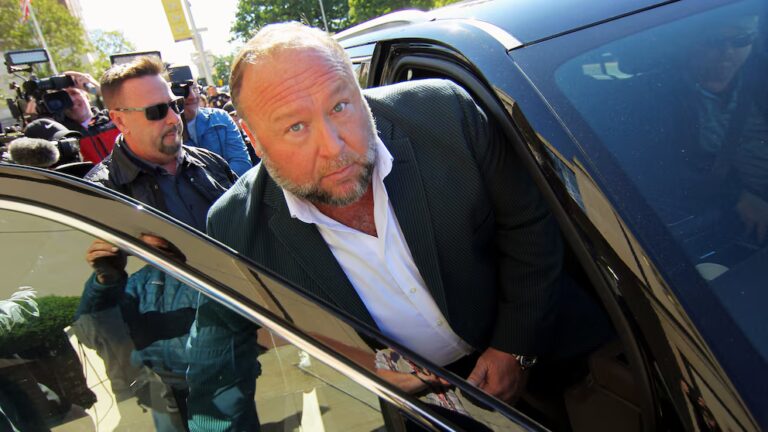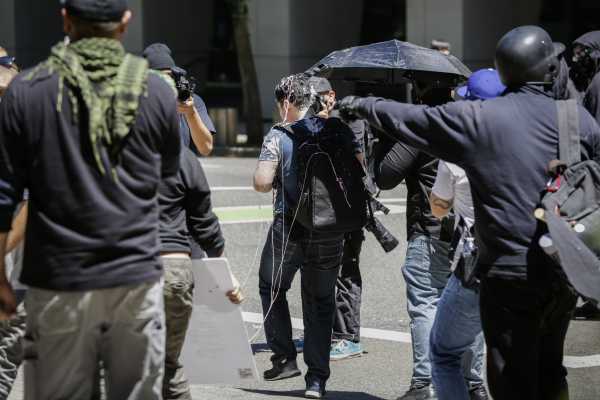
Last Saturday, the far-right Proud Boys group held a rally in Portland, Oregon. Left-wing groups, including the Portland branch of the militant antifa group, put together a counterprotest — whose attendees clashed with the Proud Boys. But the most notable instance of violence had nothing to do with the Proud Boys: It was an attack by counterprotesters on the conservative journalist Andy Ngo that reportedly sent him to the hospital.
In footage captured by Portland-based reporter Jim Ryan, demonstrators douse Ngo in milkshake, punch him, and yell at him. In short, it looks a lot like an unprovoked, unjustified, reprehensible assault on an observer — a journalist — merely because the protesters don’t like him.
But the aftermath of the attack — the narratives both sides have spun out of the basic facts established by the footage — is much trickier to assess.
In the dominant narrative, pushed by the conservative and mainstream media alike, the attack on Ngo is evidence of a serious left-wing violence problem in America. Antifa, they argue, is a group of street thugs that has repeatedly attacked journalists and poses a genuine threat to public safety. The fact that the left tolerates antifa, or even celebrates them, is proof of a serious rot; Sen. Ted Cruz (R-TX) has called for an investigation into the events in Portland.
“I pray for full and speedy recovery for journalist Andy Ngo,” writes Kevin McCarthy, the House minority leader. “The hate and violence perpetrated by Antifa must be condemned in the strongest possible way by all Americans.”
But according to a second narrative, offered primarily by less well-known left-liberal writers and social media accounts, the mainstream media is getting it all wrong. Ngo is not an innocent victim but a far-right sympathizer who has doxxed antifa members in the past, potentially facilitating their harassment, and provokes them so that he can broadcast the result. The outpouring of sympathy for Ngo, in this account, is actually evidence that the mainstream media is falling for Ngo’s grift — funneling money to his Patreon and legitimizing a right-wing smear campaign against a group that’s working to protect people from the threat of violence from groups like the Proud Boys.
“Violence is completely wrong, and I find it sad and weak to allow a sniveling weasel like Andy Ngo to get under one’s skin like this. But I’m also not going to pretend that this wasn’t Ngo’s goal from the start,” tweeted Charlotte Clymer, a press secretary at the LGBTQ advocacy group Human Rights Campaign. (Ngo himself is gay.)
The emergence of the two narratives based on the same facts, each with some grounding in reality, tells us a great deal about what’s going on in modern politics.
The right and some parts of the center need there to be a thuggish left, something that allows them to say that “both sides” are equally extreme in the Trump era even though that’s plainly untrue. Meanwhile, there’s a hunger among some parts of the left for a more radical and aggressive politics beyond the ballot box — a sense that the surge in racism and bigotry is so threatening that there’s no choice but to take to the streets and physically confront the pro-Trump right.
The debate over the attack on Andy Ngo, then, isn’t really a debate over press freedoms. It’s an expression of two divergent visions of where American politics is at right now — and who the biggest threats to its security are.
Who is Andy Ngo, and what is antifa?
The two main figures in these events are Ngo and antifa.
The publication where Ngo is an editor, Quillette, is widely seen as a major hub of the “intellectual dark web” — a loose collection of anti-political correctness, anti-identity politics, anti-left media figures and reporters. Ngo is the closest thing the intellectual dark web has to a gonzo journalist, someone who goes into allegedly hostile places and documents them for his more than 200,000 Twitter followers to illustrate that the IDW is right about the threat from multiculturalism and the left.
Last year, for example, Ngo went to the UK to chronicle the supposed threat the rising Muslim population posed to British society. The resulting article, “A Visit to Islamic England,” claimed England was being quietly conquered by fundamentalist Islam.
The piece was shredded by actual Brits. Most amusingly, Ngo presented a London sign reading “alcohol restricted zone” as evidence of Islamic dominance in the Whitechapel neighborhood; it was actually a public safety ordinance designed to discourage public acts of drunkenness from patrons of nearby pubs, bars, and strip clubs.
Ngo’s coverage of left-wing protesters is similarly ideological. He views left-wing activists, like Muslim immigrants to the West, as a threat to free and open societies. His reporting plays up acts of vandalism, violence, and hostility to free speech without a comparable focus on the much more frequent and deadly actions of right-wing extremists.
Antifa is a perfect foil for Ngo. The group of typically black-clad activists are radicals who believe the best way to deal with the rise of white supremacy and hate groups in the Trump era is by confronting them on the street. Sometimes, this means organizing demonstrations against them; other times, it means brawling in the streets.
“They view self-defense as necessary in terms of defending communities against white supremacists,” Mark Bray, a Dartmouth historian who studies antifa, told my colleague Sean Illing in a 2017 interview. “They have no allegiance to liberal democracy, which they believe has failed the marginalized communities they’re defending. They’re anarchists and communists who are way outside the traditional conservative-liberal spectrum.”
Antifa does not have a central command structure, and its members are typically anonymous. While not all antifa activities involve physical confrontation, some do have a nasty habit of assaulting people — including journalists, as some reporter friends of mine like Taylor Lorenz, who were attacked while live-streaming in Charlottesville, Virginia, can speak to.
Portland, where Ngo lives, has seen a particularly notable number of brawls between antifa and far-right groups in recent years. Ngo has not only documented antifa activities but published at least one member’s full name alongside a picture — “doxxing” her, in internet parlance, and exposing her to retaliation. Ngo’s work on this front had made him well-known to antifa, and profoundly despised — he claims, for example, that an antifa member assaulted and robbed him at his gym.
In mid-June, he reported advance news of an event on June 29 in Portland by the “Proud Boys” — a far-right group who describe themselves as “Western chauvinists” and are a major antifa nemesis. Portland antifa, who organized a counterprotest, issued a statement warning about the event that criticized Ngo by name.
The stage was set for a major confrontation between Ngo and antifa. And when he showed up at their event over the weekend, that’s exactly what happened.
What the right and left narratives of the attack reveal
The attack on Ngo appeared to be taking place at a left-wing counter-rally to the Proud Boys event. It was a march, and while there was at least one scuffle between left-wingers and Proud Boys at one point, the situation where Ngo was filming with his GoPro did not appear violent prior to the attack on him.
The footage is only 30 seconds long, so it doesn’t show whether Ngo was antagonizing the demonstrators in some other way. But if you watch it, Ngo clearly comes across as the victim of an attack:
Ngo was recognized by the crowd, as people yell things like, “Fuck you, Andy Ngo!” He was punched without any attempt to retaliate, covering his face with his hands in a defensive posture. You can see him being hit with a milkshake (a common tactic used against right-wing figures in the UK), egged, and sprayed with silly string.
Footage from the aftermath, taken by Ngo himself, shows his face battered and bloody. According to a statement by Quillette’s editors, the attack produced “a brain hemorrhage that required Ngo’s overnight hospitalization.”
It’s important to reiterate: Beating people up is reprehensible. Whoever punched Ngo, antifa or otherwise, committed a crime.
The right/center and left narratives go beyond that central point to claim Saturday’s events for their team. In the process, they tend to distort the facts, trying to make it fit their worldview when it doesn’t quite conform.
CNN’s Jake Tapper, for example, argued that this was part of a broader pattern of antifa violence — retweeting an interview with Ngo in which he compares antifa to the neo-Nazi who killed Heather Heyer in Charlottesville in 2017.
But antifa has not committed a single murder, at least that we’re aware of. We don’t yet have proof that the people who assaulted Ngo were antifa members (though it seems likely given their history). And the attack on Ngo seems less like a part of a broader pattern of attacks on journalists than it does part of a specific feud between Portland antifa and Ngo; they didn’t appear to target other journalists at the rally in the same fashion (which doesn’t excuse the attack on Ngo).
The problem with this narrative is not that antifa is blameless. Some of its members clearly have crossed the line. It’s that hyping the threat they pose paints a decentralized group with a broad and simple brush, and contributes to a disproportionate right-wing panic in the process.
Portland police, based on a theory developed by one officer, tweeted that the milkshakes being thrown by protesters may have been mixed with quick-dry cement. There is at best flimsy evidence for this claim, which is hard to believe as a matter of sheer physics (sugar slows the process of concrete setting). There’s also footage of people drinking the milkshakes, which you wouldn’t do if it were a hidden cement vector. But that didn’t stop the quick-dry cement claim from being reported as fact in right-wing outlets, including Fox News.
This is part of a broader narrative, largely sold on the right, designed to paint antifa as an equal-and-opposite number to neo-Nazi groups — Fox’s Laura Ingraham has even proposed labeling antifa as terrorists. The idea is to paint a picture of symmetrical radicalization, one in which both sides have extremist flanks that pose a major threat to civil peace.
But that’s simply inaccurate. As bad as antifa’s transgressions have been, the far right has been worse. There is no antifa equivalent to Heyer’s murder, or the Charleston church shooting, or the attack on a Pittsburgh synagogue. Antifa has no relationship with the Democratic Party nor do its members really support the party; alt-right activists are Trump fans, and at times seem to get tacit support from the White House (again, see Charlottesville). A national focus on antifa can distract from the much greater problem of far-right extremism — as watchdog groups have argued.
“All forms of antifa violence are problematic,” the Anti-Defamation League, a Jewish anti-hate group, writes in its primer on the group. “That said, it is important to reject attempts to claim equivalence between the antifa and the white supremacist groups they oppose.” The guide continues:
But the left-wing narrative of events where Ngo is the real villain has serious problems too. It’s indicative of a hunger on the left, amid administration horrors like child detention camps and the scary rise in far-right non-state violence, to create a “with us or against us” mentality.
It’s fine to dislike Ngo’s journalism (I do), and to argue that he has intentionally antagonized antifa in order to provoke them. But just because Ngo has filmed Portland leftists, or even doxxed them, doesn’t mean they are justified in using physical force against him.
Antifa members aren’t morally inert forces of nature. They have agency, and they don’t need to respond to Ngo’s antagonism with violence. The fact that some in the group seem to have done so exposes that some who identify as antifa aren’t nearly as purely anti-fascist as they want observers to think. Antifa may oppose the alt-right first and foremost, but members direct their clashes at a broader set of targets than anyone who can fairly be called a “fascist.”
There’s also a strange meme emerging in some antifa-sympathetic quarters that Ngo is somehow “not a journalist.”
This is clearly incorrect. Ngo is a writer and photographer who contributes to journalistic outlets. That’s journalism, even if you don’t like the content.
Street confrontations and the culture war
The divergent interpretations of the Ngo situation, based on limited evidence, reminds me of the Covington Catholic controversy in January.
In that incident, a short viral video showed a group of white teens in “Make America Great Again” hats surrounding a small group of Native American demonstrators, including an elder from the Omaha tribe named Nathan Phillips. One of the kids, identified as Covington Catholic High School student Nick Sandmann, stands in Phillips’s face and smirks, unaffected by the drumming. It looks like a straightforward story of privileged racist white kids harassing a peaceful Native protester.
But shortly after the clip went viral, to universal and at times vitriolic condemnation, a pushback began in right-of-center media. Some argued that mainstream media and left-wing activists alike were being unfair to the kids, who were actually defending themselves from insults and harassment from a separate group of protesters, members of the fringe Black Israelite movement.
There was far more footage of this incident than the Ngo one, yet it was difficult to be certain which side had a more accurate read of the situation. It’s clear some of the kids were confused by Phillips; it’s equally clear some of the kids were making racist gestures. We don’t know what was in Sandmann’s head when he was standing in front of Phillips.
But the Covington incident dominated American politics for days because both sides saw what they wanted to in the footage. The left, which sees white supremacy as one of its fundamental enemies, was quick — in some cases, too quick — to identify Sandmann and his classmates as villains.
The right’s reaction, in turn, revealed several of its core assumptions that white Christians are persecuted minorities, that overzealous social justice warriors represent an existential threat to a free society, and that the media is on their enemies’ side.
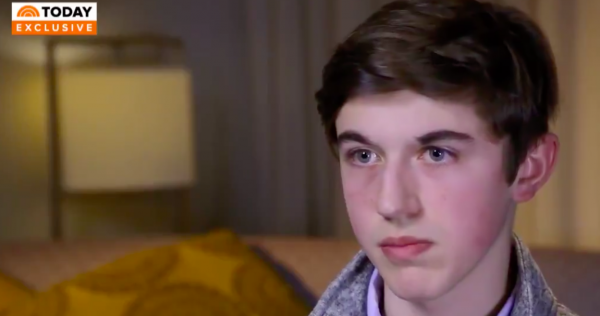
A related dynamic seems to be shaping up in the Ngo case: The right sees proof that the left is radicalizing, a threat to them and their safety, and hypes up the risk they pose. The left sees a hostile journalist trying to gin up sympathy and dollars via his Patreon account, and warns that he’s trying to trick the public into excusing his anti-left propaganda work.
It’s never been easier to capture footage of a confrontation at a rally or other public event. Social media, particularly Twitter, can amplify an ideologically particular interpretation of events before all the evidence is in — allowing a contradictory narrative to form on the other side in response, highlighting its own selective interpretation of what happened.
This is particularly likely to happen at heated events like protests. As the New York Times’s Charlie Warzel points out, Ngo is not the only person who goes to such events with the intent of filming something notable:
But we know, as filmmakers long have, that footage doesn’t convey the objective reality of a situation; it reveals certain things and obscures others. Moreover, the meaning of filmed events is entirely open to contestation. The mere fact that Ngo was assaulted doesn’t say what the meaning of that assault is, or what the broader context is that’s necessary to understand it.
The result is a never-ending stream of Rorschach test controversies pushed on social media, in which either the meaning of events on film or even the very facts of what’s being depicted are litigated endlessly and tied to our right-versus-left culture war.
The attack on Andy Ngo is not the first situation where political factions have used a high-profile video to claim that the other side is the real threat to the public — nor will it be the last.
Sourse: vox.com
